Journal of Daylighting
An international journal devoted to investigations of daylighting in buildings. It is the leading journal that publishes original research on all aspects of Energy, buildings, and lighting.
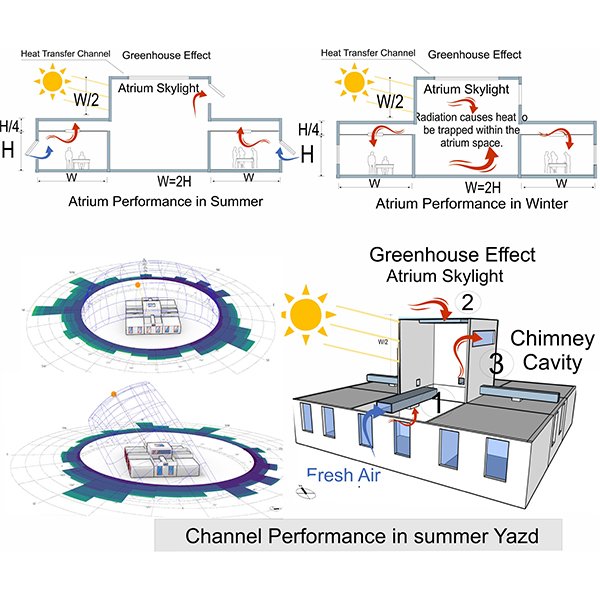
RESEARCH ARTICLE
Design Optimization of Atrium Skylights for Enhanced Office Building Performance
The increasing demand for energy and the impact of climate change underscore the necessity of energy-efficient building designs. This study optimizes atrium skylights as a passive design solution for Yazd, Iran aiming to enhance thermal and visual comfort.
Journal of Daylighting 12 (2025) 520-547
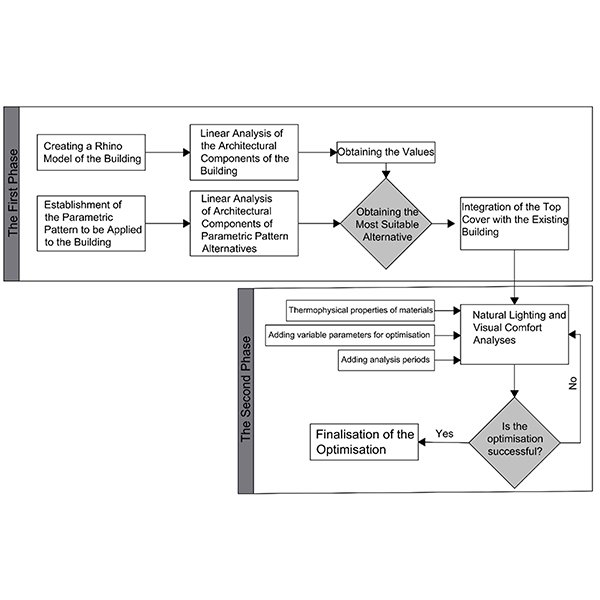
RESEARCH ARTICLE
Parametric Exploration of Natural Lighting and Visual Comfort in Contemporary
The re-functioning of historical buildings frequently necessitates new additions. This is particularly relevant for historical buildings with open courtyards, where interventions often involve the installation of upper covers using contemporary materials and techniques This issue can become especially apparent in historical buildings that are completely enclosed with transparent materials, raising concerns about the greenhouse effect and its potential to compromise indoor comfort.
Journal of Daylighting 12 (2025) 506-519
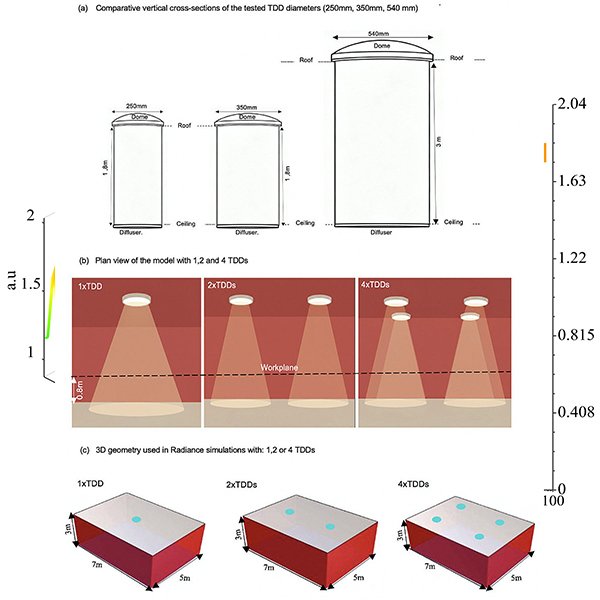
RESEARCH ARTICLE
Multi-Criteria Optimization of Tubular Daylighting Devices for Classrooms in
In educational architecture, particularly in high-solar climates, achieving a balance between ample daylight and visual comfort is a significant challenge.
Journal of Daylighting 12 (2025) 491-505
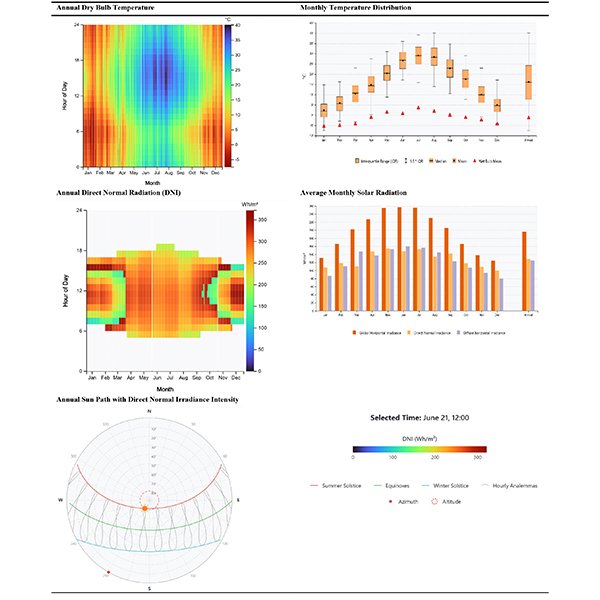
RESEARCH ARTICLE
Multi-objective Optimization of Girih Tile Patterns and Colored Glass
Efficient energy use is vital in architecture, and the building envelope plays a key role in aesthetics, thermal comfort, energy efficiency, and natural lighting.
Journal of Daylighting 12 (2025) 441-467
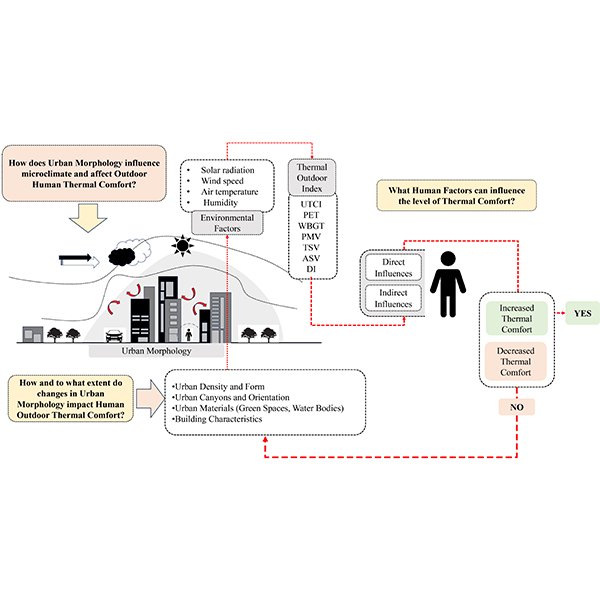
REVIEW ARTICLE
Human Interaction with Urban Morphology under the Influence of Urban
Outdoor urban spaces are essential to residents’ well-being, yet their thermal comfort is increasingly compromised by urbanization and climate change. .
Journal of Daylighting 12 (2025) 468-490
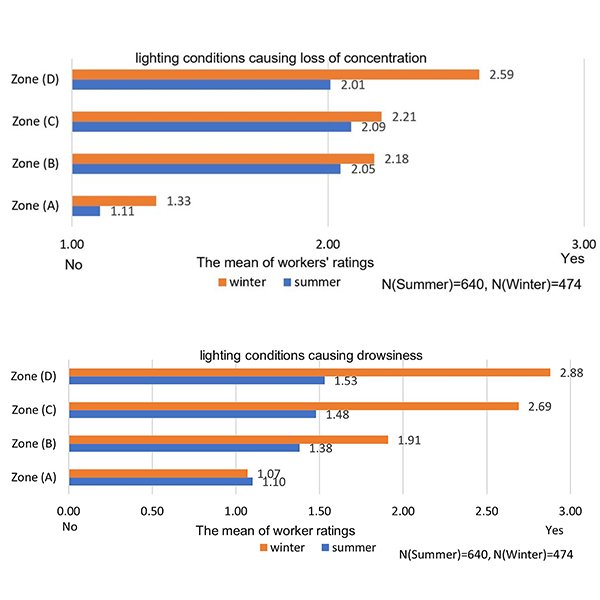
RESEARCH ARTICLE
Evaluating the Impact of Lighting Conditions on Workers’ Safety and
Lighting is a key element of design that plays a significant role in affecting workers’ health and safety in industrial workspaces. Given the scarcity of scientific studies addressing visual environments in relation to workers health in industrial buildings, this field study was conducted to explore workers' responses to multiple lighting scenarios inside production halls on their occupational health and safety in six factories in Sadat City, Egypt. .
Journal of Daylighting 12 (2025) 420-440
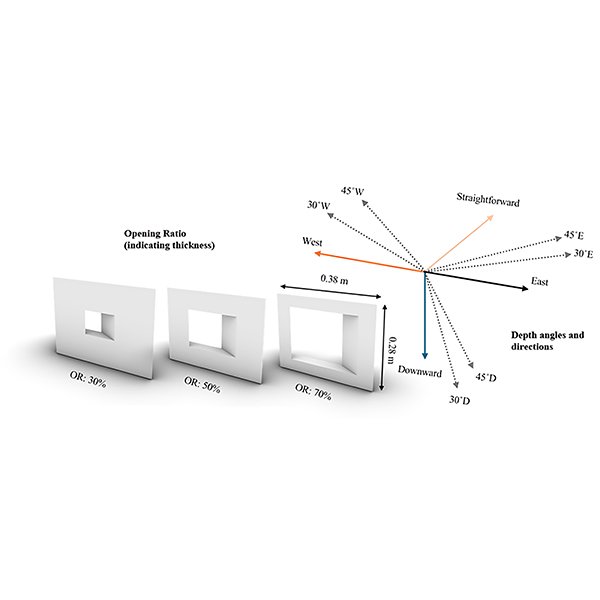
RESEARCH ARTICLE
Evaluating Daylighting Performance of Parametric Mashrabiya in Mediterranean Climate: A
This study examines the daylighting performance of parametric Mashrabiya-inspired shading devices in a Mediterranean climate, aiming to enhance occupant comfort and visual performance.
Journal of Daylighting 12 (2025) 397-419
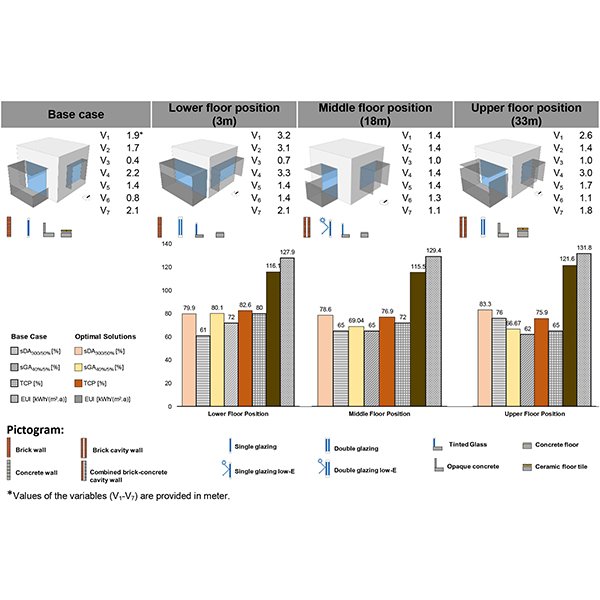
RESEARCH ARTICLE
Height-Responsive Balcony-Integrated Envelope Design for High-Rise Residential
Balconies function as essential shading elements within the building envelope, playing a critical role in regulating occupant comfort and energy efficiency.
Journal of Daylighting 12 (2025) 375-396
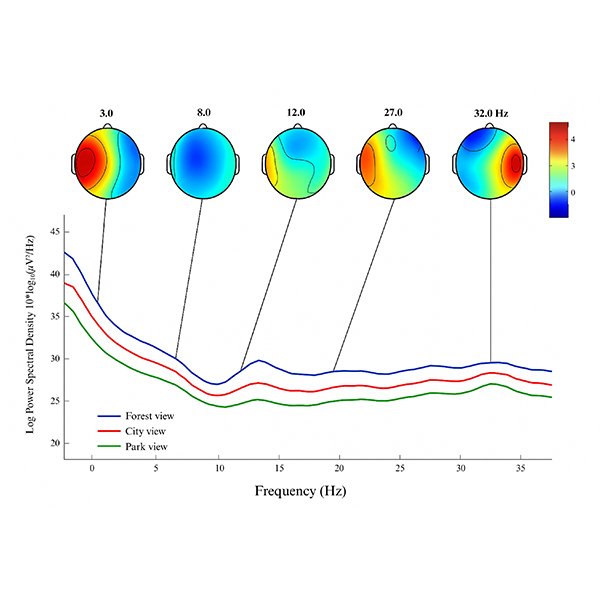
RESEARCH ARTICLE
EEG-Based Neurophysiological Responses to Classroom Window Views in Green
This study examines the neurophysiological responses of students to different classroom window views - forest, park, and city - within energy-efficient, green campus environments.
Journal of Daylighting 12 (2025) 359-374
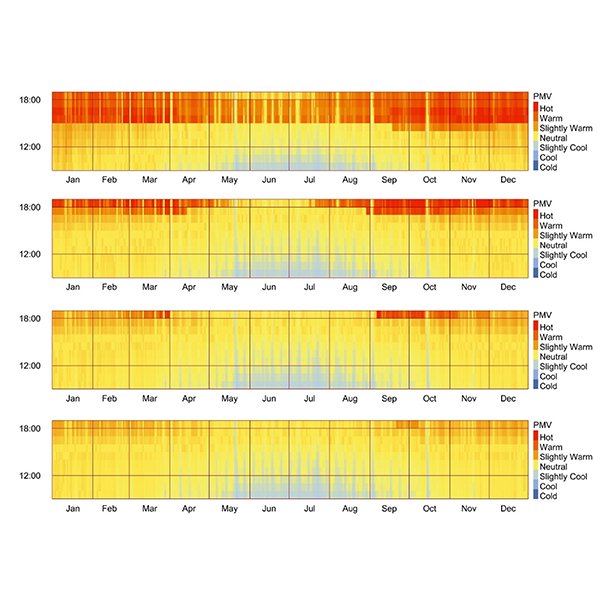
RESEARCH ARTICLE
Enhancing Year-Round Thermal Comfort with Solar Control Films: A
Windows significantly contribute to thermal discomfort in high solar irradiance climates by allowing excessive heat gains and uneven indoor temperatures.
Journal of Daylighting 12 (2025) 343-358
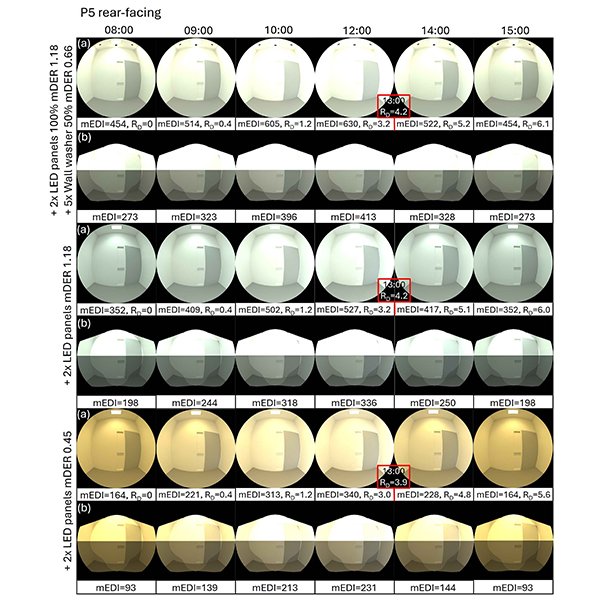
RESEARCH ARTICLE
Evaluating Visual and Beyond-Vision Light Effects and Energy Consumption
Light influences human physiology and psychology through visual and beyond-visual effects, collectively termed ‘integrative lighting.’ Human responses depend on luminous (quantity, spectrum, directionality) and temporal (timing, duration, history) factors, yet no studies examined their combined influence on integrative lighting. Th.
Journal of Daylighting 12 (2025) 306-342
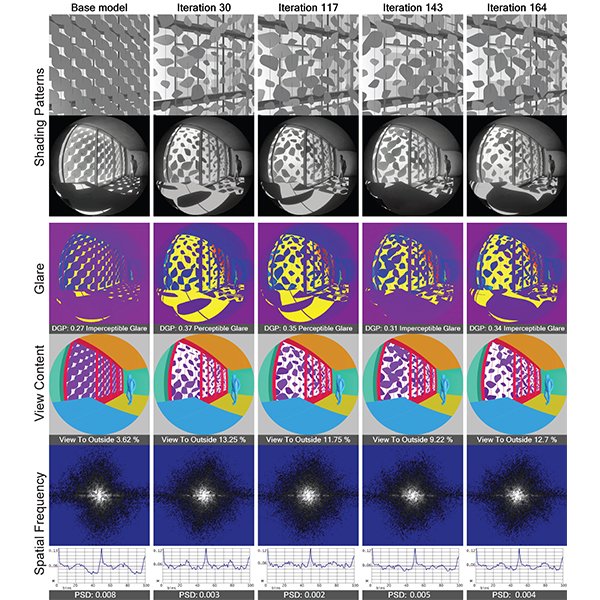
RESEARCH ARTICLE
Occupant-Centric Visual Comfort Assessment and Optimization of Passive Solar
This study introduces a comprehensive computational framework integrating image-based simulations, spatial frequency analysis, and multi-objective optimization to evaluate and optimize passive solar shading devices from an occupant-centric perspective.
Journal of Daylighting 12 (2025) 293-305
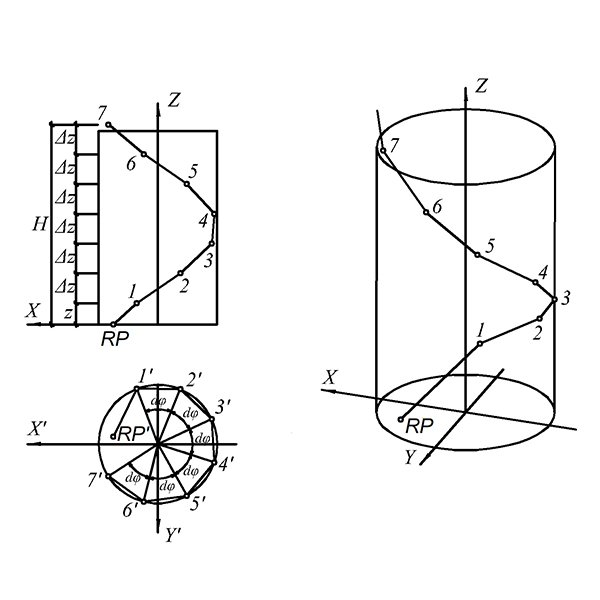
RESEARCH ARTICLE
Determination of Efficiency of the Vertical Specularly Reflecting Cylindrical Light
Article is devoted to determination of efficiency of the vertical specularly reflecting cylindrical light shaft for various types of the firmaments standardized by CIE (International Commission on Illumination).
Journal of Daylighting 12 (2025) 278-292
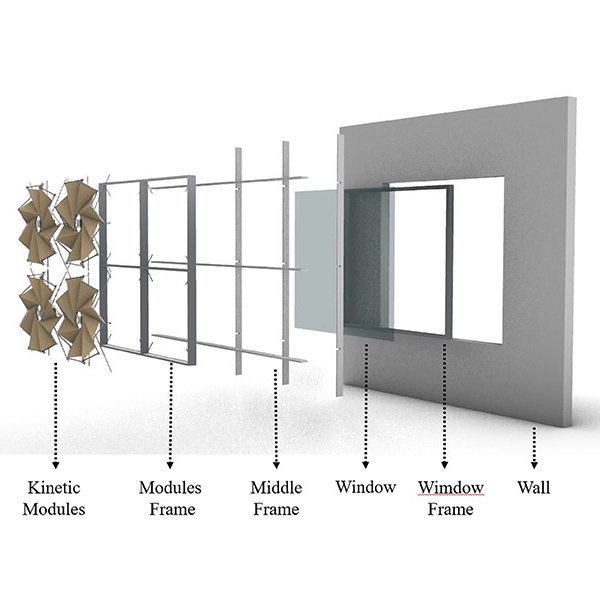
RESEARCH ARTICLE
Designing a Kinetic Façade to Control Glare: Inspiration of
In this study, to control glare in buildings with glass facades, a kinetic facade was designed using a pattern inspired by nature. Accordingly, in this study, due to the essential similarity of buildings with plants regarding the inability to move and location, in the first step, plants and their morphology were examined.
Journal of Daylighting 12 (2025) 265-277

RESEARCH ARTICLE
Tessellation-Based Origami-Inspired Movable Façade for Daylighting and
This study emphasizes the importance of daylight performance in interior spaces as a critical factor in achieving global Sustainable Development Goals, including energy efficiency, environmental sustainability, and healthy living conditions.
Journal of Daylighting 12 (2025) 252-264

RESEARCH ARTICLE
Unfolding 3D Space into Binary Images for Daylight Simulation via
Daylighting plays a crucial role in building science, impacting both occupants’ well-being and energy consumption in buildings. Balancing the size of openings with energy efficiency has long been a challenge. .
Journal of Daylighting 10 (2023) 204-2013
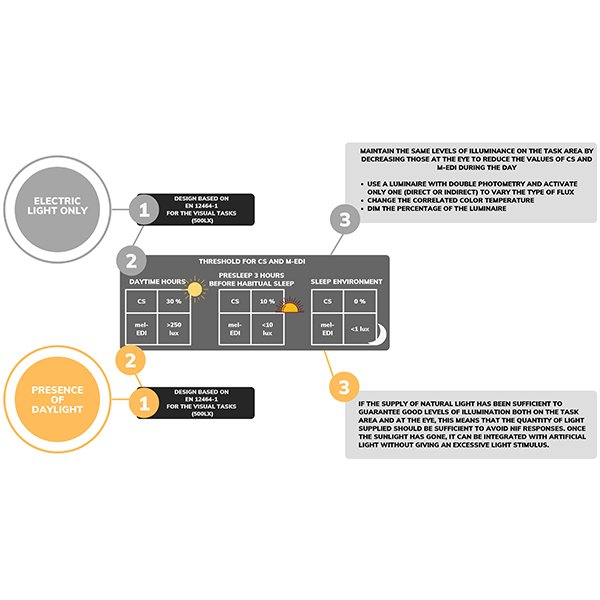
RESEARCH ARTICLE
Integrative Lighting Design: How to Optimize Visual and Non-visual
The objective of this paper is to outline fundamental principles for the electric lighting design of workplace environments such as offices. The study considers both the suggested guidelines and values for non-visual light design and the specifications for visual tasks dictated by the EN 12464-1:2021.
Journal of Daylighting 10 (2023) 192-203
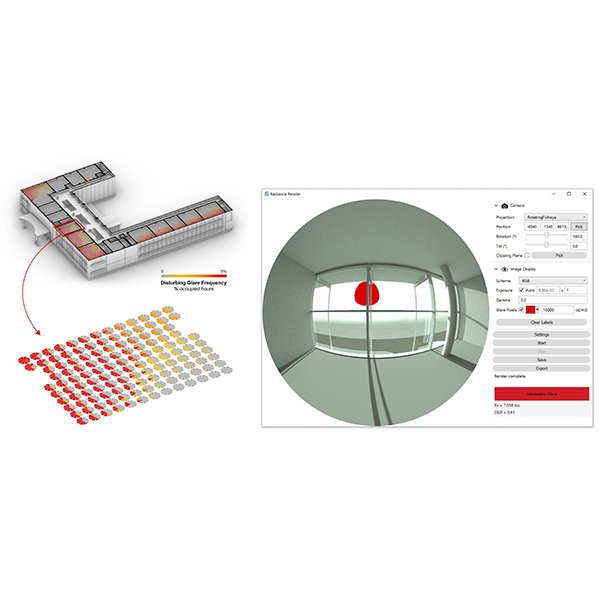
RESEARCH ARTICLE
The Effect of Parametric Patterned Façade Variations on Daylight
Parametric design influences on building envelope design are exponentially increasing in the current era due to the dominance of computational design on architectural outcomes.
Journal of Daylighting 10 (2023) 173-191
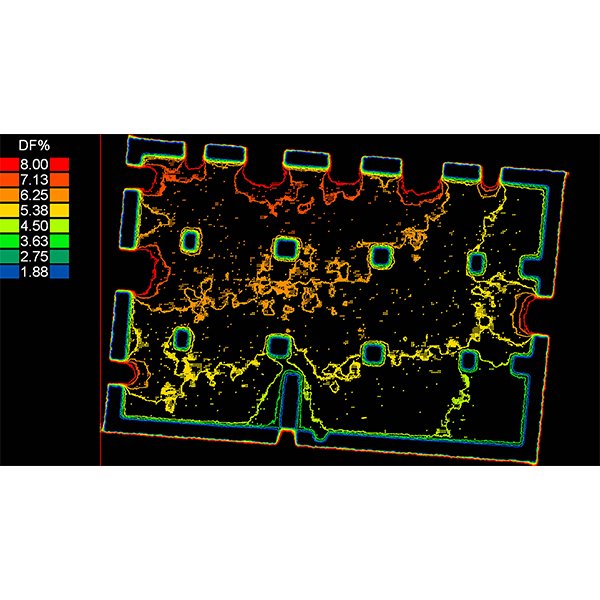
RESEARCH ARTICLE
Analysing the Daylighting Performance of the Main Prayer-hall in
This paper studies the daylighting quality of the indoor prayer-hall in The Great Upper Mosque of Hama city in Syria, highlighting this distinctive historical converted building that has been functioning as a mosque since the entry of Islam in the 6th century AD.
Journal of Daylighting 10 (2023) 153-172
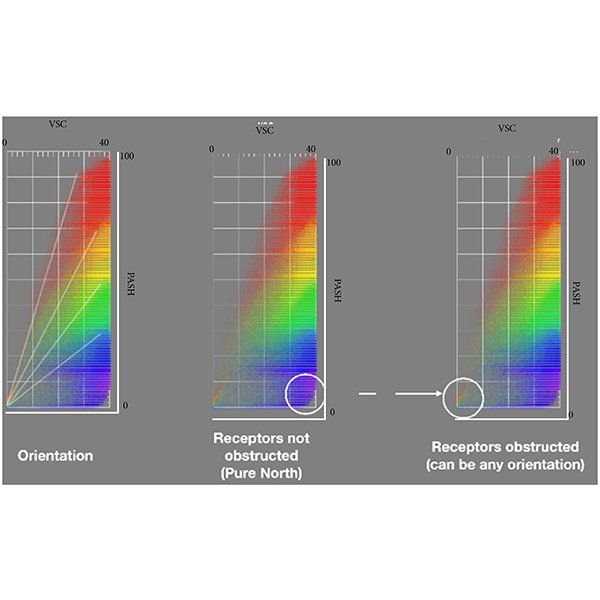
RESEARCH ARTICLE
Sunlight-Daylight Signature: a Novel Concept to Assess Sunlight and
Daylighting and solar availability at urban scale has come to play a crucial role in the perception of discomfort conditions for people, both in outdoor and indoor spaces, and on the energy consumption of buildings.
Journal of Daylighting 10 (2023) 136-152
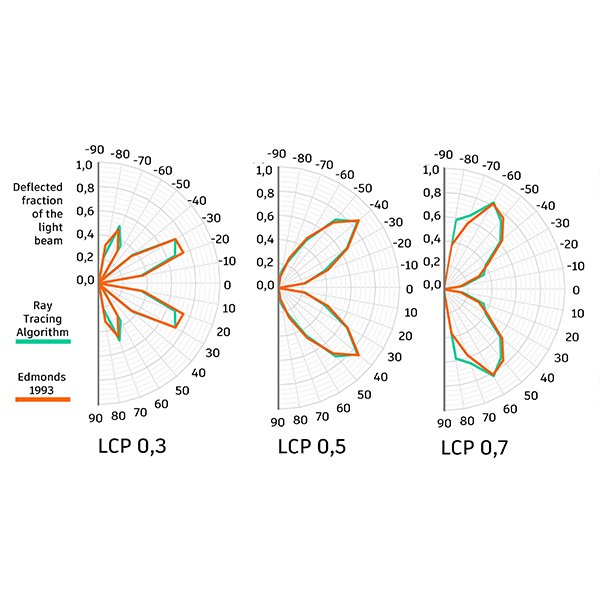
RESEARCH ARTICLE
Ray Tracing Algorithm to Simulate Laser-Cut Panel Light-Redirecting
Daylighting simulation software is an important tool to improve the quality of building design and to improve the quality of the built environment. For its application to correspond to reality, its algorithm needs to reflect real behaviour in the best possible way.
Journal of Daylighting 10 (2023) 87-98

RESEARCH ARTICLE
The Effects of Orientation and Width of Space Between Buildings
Excessive heat in the high-rise urban fabric has contributed to pedestrian and occupants' discomfort. Establishing wind circulation in space with an environmentally compatible and optimal configuration is necessary to improve comfort in this region.
Journal of Daylighting 10 (2023) 99-116
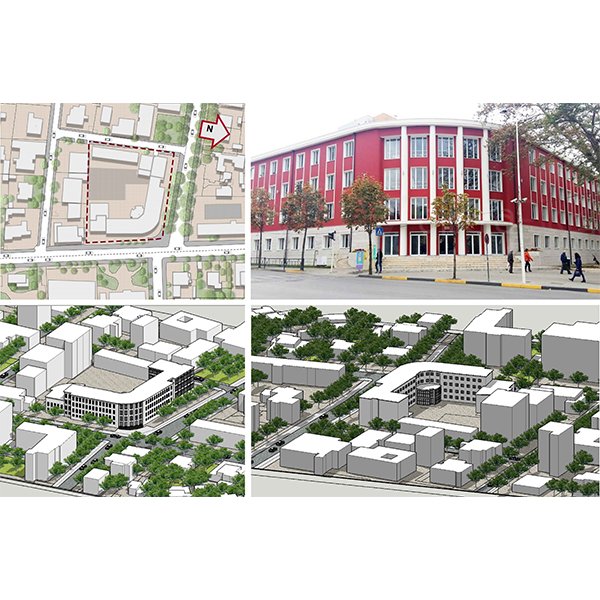
RESEARCH ARTICLE
Evaluation of the Visual Comfort and Daylight Performance of the
The daylight in classrooms is a crucial aspect that affects the quality of the learning environment and the overall performance of the students. Visual arts, such as painting, sculpture, carving, textile design and photography, require specific lighting conditions, which are different from the regular classroom standards.
Journal of Daylighting 10 (2023) 117-135

RESEARCH ARTICLE
Design Optimization of the Skylight for Daylighting and Energy Performance
In terms of sustainable design, lateral windows and skylights are important. Daylighting has become a vital component in office buildings because it increases occupants' productivity, well-being, and energy savings via windows and skylights.
Journal of Daylighting 10 (2023) 72-86
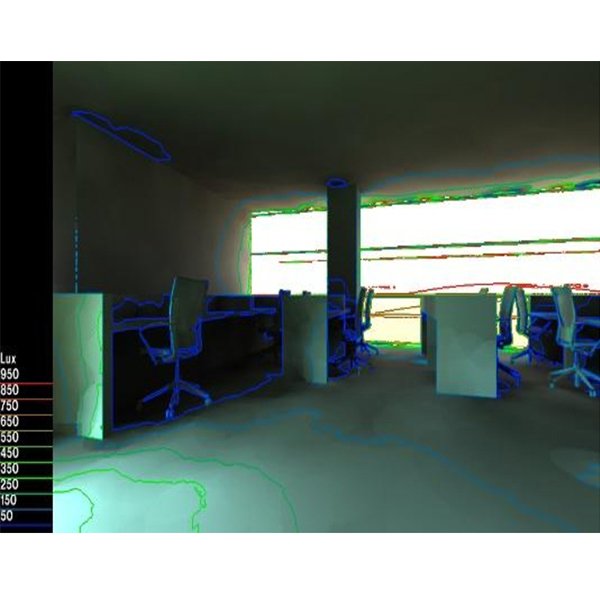
RESEARCH ARTICLE
The Architectural Design of Building Façade Models Related to
Lighting control integrated with daylighting is recognized as an important and useful strategy in energy efficient building design. One of the right factors to reduce energy consumption for artificial lighting during the day is the maximum utilization of sunlight.
Journal of Daylighting 10 (2023) 60-71

RESEARCH ARTICLE
Evaluation of Occupants’ Visual Perception in Day Lit Scenes: A
Daylight improves indoor environmental quality, the physical and mental health of occupants, and their efficiency. Research in the area of human-centric lighting that considers the visual and non-visual effects of light on human vision, have focused on examining human visual perception in response to a wide variety of lighting aspects.
Journal of Daylighting 10 (2023) 45-59

RESEARCH ARTICLE
Impact of Window Design on Dynamic Daylight Performance in an
Window design affects the building's appearance. Besides, it has a significant impact on daylight performance and the visual comfort of interior spaces.
Journal of Daylighting 10 (2023) 31-44

RESEARCH ARTICLE
Visual Comfort Assessment of Hospital Patient Rooms with Climate Responsive
As advanced technologies become prevalent, they are being used more widely in numerous fields. The building sector is not an exception. One of these cutting-edge technologies is responsive facades, which are used in buildings and have an undeniable effect on daylighting.
Journal of Daylighting 10 (2023) 17-30

RESEARCH ARTICLE
Biomimicry as an Approach to Improve Daylighting Performance in Office
Biomimicry inspired architects to solve complex design problems and develop adaptive solutions for enhancing the environmental quality. Fields of inspiration include energy efficiency, natural ventilation, daylighting, and structural stability.
Journal of Daylighting 10 (2023) 1-16
Join our Editorial Board
CVs should be submitted electronically to jd@solarlits.com.
Editorial Board

Prof. Önder Güler
Istanbul Technical University, Türkiye

Dr Arsenio Barbón
University of Oviedo, Spain

Dr Ferdinando Salata
University of Rome, Italy

Prof. Yuehong Su
University of Nottingham, UK

Prof Umberto Berardi
Politecnico di Bari, Italy

Prof. Nabil Elminshawy
Port Said University, Egypt

Dr Fabio Peron
IUAV University of Venice, Italy

Prof. Barbara Szybinska Matusiak
NTNU, Norway

Prof Hongfei Zheng
Beijing Institute of Technology, China

Dr Guiqiang Li
University of Science and Technology of China, China

Dr. Kacem Gairaa
center for renewable energy development, Algeria

Dr Canan Kandilli
Usak University, Turkey

Prof. Antonio Manuel Peña García
University of Granada, Spain

Dr Boon Han Lim
Universiti Tunku Abdul Rahman, Malaysia

Prof Laura Bellia
University of Naples Federico II, Italy

Dr Seyed Morteza Hosseini
Aalborg University, Denmark

Dr. Francesco Nocera
Department of Civil Engineering and Architecture, University of Catania (ITALY), Italy

Dr. Peng XUE
Beijing University of Technology, China

Dr Vincenzo Costanzo
University of Catania, Italy

Omid Nematollahi
Isfahan University of Technology, South Korea

Dr. Francesca Fragliasso
University of Naples Federico II, Italy

Dr Hui Lv
Hubei University of Technology, China

Dr Karam M. Al-Obaidi
Sheffield Hallam University, UK

Prof Jitka Mohelnikova
Brno University of Technology, Czech Republic

Wei Wang
Southeast University, 中国

Dr Rizki A. Mangkuto
Institut Teknologi Bandung, Indonesia

Dr Paula M. Esquivias
University of Granada, Spain
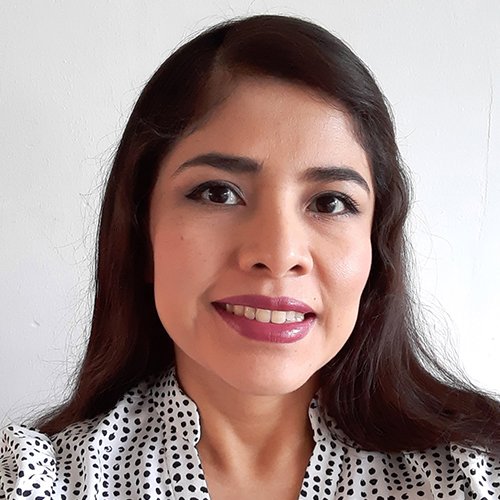
Dr Doris Abigail Chi Pool
Universidad de las Américas Puebla, Mexico
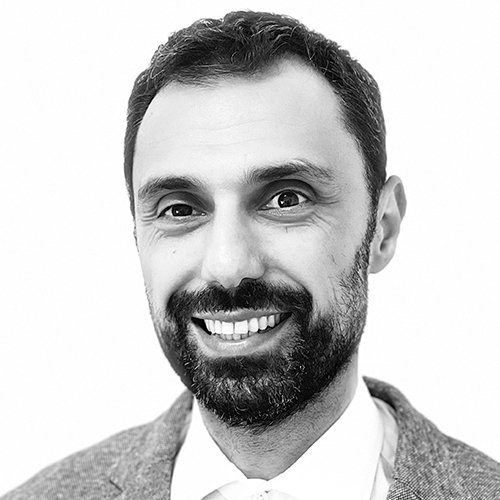
Dr. Michele Rocca
University of Pisa, Italia

Dr Osama Mohamed Omar
University of Bahrain , Bahrain
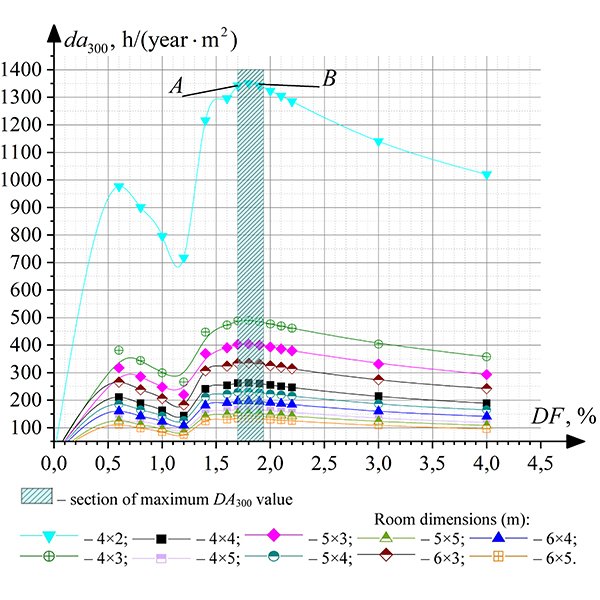
RESEARCH ARTICLE
Effective Use of Daylight in Office Rooms
The rational use of daylight can significantly reduce the cost of electricity for artificial lighting. This research aims at investigating the parameters of translucent structures of building envelope, and the value of daylight factor, for which maximum efficiency of daylight usage is achieved in office rooms.
Journal of Daylighting 7 (2020) 154-166
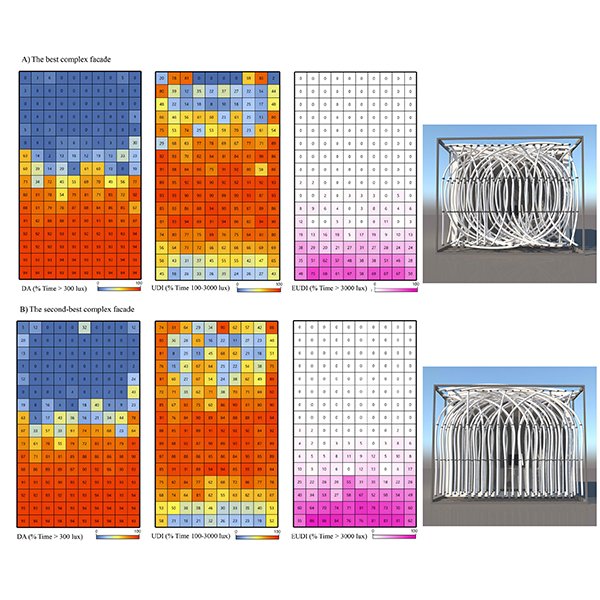
RESEARCH ARTICLE
Biomimetic Kinetic Shading Facade Inspired by Tree Morphology for Improving
Many recent studies in the field of the kinetic façade developed the grid-based modular forms through primary kinetic movements which are restricted in the simple shapes..
Journal of Daylighting 8 (2021) 65-85

RESEARCH ARTICLE
Automatic vs Manual Control Strategy for Window Blinds and Ceiling
A case study to evaluate the occupants' satisfaction in relation to two different control strategies (fully automatic and manual) for blind and ceiling lights use in cell offices was carried on in Trondheim, Norway.
Journal of Daylighting 6 (2019) 112-123
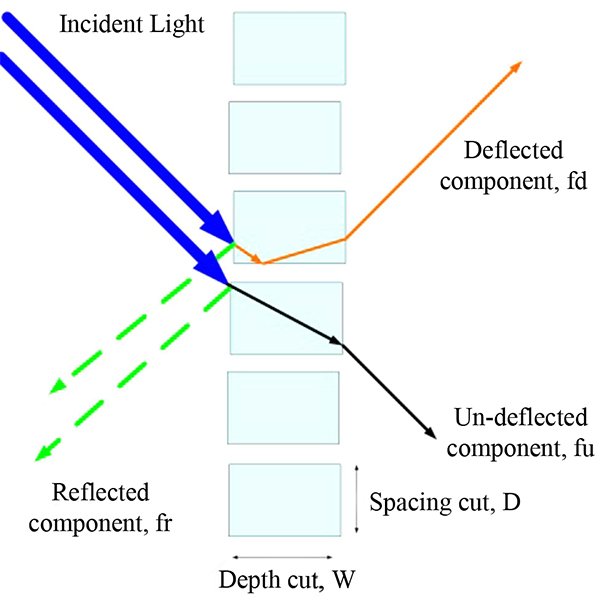
RESEARCH ARTICLE
Maximizing the Performance of Laser Cut Panel by Interaction of
The interaction between different ceiling geometries with laser cut panels (LCPs) is investigated using real experiments and computer simulations to maximize the daylight performance of the LCP.
Journal of Daylighting 1 (2014) 29-35

RESEARCH ARTICLE
Effect of window glazing on colour quality of transmitted daylight
In this study, the colour quality of the daylight transmitted through different window glazing types is evaluated. The analysis considered four different types of window glazing: laminated, monolithic, coated and applied film glazing ranging in luminous transmittance from around 0.
Journal of Daylighting 4 (2017) 37-47

RESEARCH ARTICLE
An Approach to Determine Specific Targets of Daylighting Metrics and
This study comes from an integrated approach combining daylighting and thermal aspects of building spaces. Several room configurations derived from the combination of four main design variables are tested.
Journal of Daylighting 8 (2021) 1-19

RESEARCH ARTICLE
Comparative Investigation of Daylight Glare Probability (DGP) Comfort Classes in
Glare is considered one of the most important variables to reach visual comfort and visual quality. It represents one of the fundamental barriers for an effective use of daylighting in buildings.
Journal of Daylighting 8 (2021) 284-293

RESEARCH ARTICLE
Energy Saving Generated Through Automatic Lighting Control Systems According to
The standard EN 15193-1:2017 “Energy performance of buildings - Energy requirements for lighting” introduced a detailed method to calculate the energy demand for lighting in buildings. Th.
Journal of Daylighting 6 (2019) 131-147
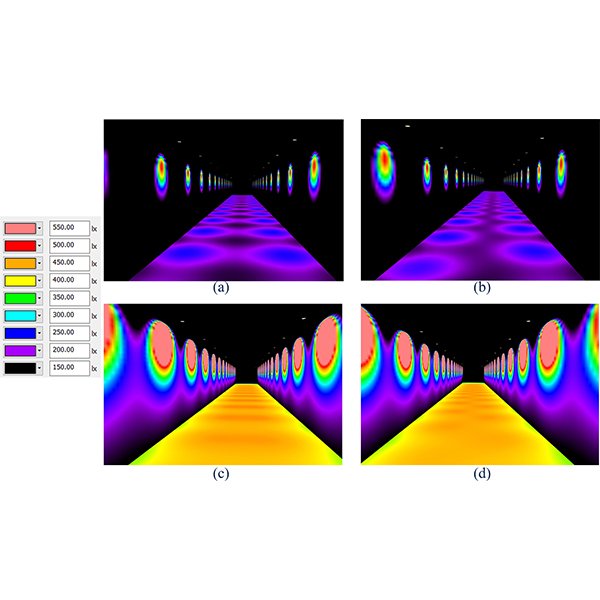
RESEARCH ARTICLE
Phasor Method to Estimate Illuminances Due to Parallel Arrays of
Direct horizontal illuminance along a calculation row due to two parallel arrays of large numbers of identical light sources behaves like a periodic signal with a sinusoidal pattern, which contains useful information for design purpose.
Journal of Daylighting 7 (2020) 246-257

RESEARCH ARTICLE
Daylighting Evaluation and Optimisation of Window to Wall Ratio for
A base case model is a more potent dose for applied research; the passive architectural design for sustainability requires optimised experiments. However, experimenting with physical developments require construction and deconstruction until they achieved the optimal scenario.
Journal of Daylighting 8 (2021) 20-35

RESEARCH ARTICLE
Optical Characteristic Investigation on an Underwater Adjustable Focus Solar Concentrator
This paper presents an underwater adjustable focus solar concentrator, which is composed of a piece of transparent elastic membrane and a hollow cylindrical-like structure.
Journal of Daylighting 6 (2019) 169-175

RESEARCH ARTICLE
A Comprehensive Evaluation of Perforated Façades for Daylighting and
New design tools have enabled architects to explore complex geometries for building envelopes. Perforated Screens (PS) have gained popularity but their design is still intuitive, often focused on aesthetic and morphological criteria.
Journal of Daylighting 6 (2019) 97-111

RESEARCH ARTICLE
Annual Performance Assessment of Complex Fenestration Systems in Sunny Climates
Complex Fenestration Systems (CFS) are advanced daylighting systems that are placed on the upper part of a window to improve the indoor daylight distribution within rooms.
Journal of Daylighting 2 (2015) 32-43

RESEARCH ARTICLE
A New Trend for Indoor Lighting Design Based on A
Most power system planners are interested in the savings of electrical power consumption. Various references demonstrate that the highest consumed power is by the lighting systems standing around 19% of worldwide energy consumption.
Journal of Daylighting 7 (2020) 137-153

RESEARCH ARTICLE
Design of a Multi-Surface Solar Concentrator
A multi-surface solar concentrator is proposed in this study. The concentrator is designed by improving the light receiving rate of a parabola when the incident angle changes within 0°~20° by adding involute, shifting the involute up, and changing the shape of the parabolic top. .
Journal of Daylighting 6 (2019) 176-186

RESEARCH ARTICLE
Impact of Different Shading Devices on Daylight Performance and Visual
Daylighting has become an essential feature in libraries since it can boost productivity, well-being, and energy savings. It is crucial to prevent discomfort glare irritation while maintaining the quality of view, and daylight demands.
Journal of Daylighting 9 (2022) 97-116

RESEARCH ARTICLE
Simulation of Daylighting Conditions in a Virtual Underground City
From the Piranesi fantastic architectures to the animation movies and video games of the last thirty years, a new design approach has been introduced and developed: the design of the virtual space.
Journal of Daylighting 2 (2015) 1-11

RESEARCH ARTICLE
An Improvement to Calculation of Lighting Energy Requirement in the
Daylighting has a recognized potential for electric energy savings when is used as a complement for artificial lighting. This study reviews the comprehensive calculation method for lighting energy requirement in non-residential buildings introduced by the European Standard EN 15193: 2007 and investigates its feasibility in China.
Journal of Daylighting 1 (2014) 16-28

RESEARCH ARTICLE
Optical Analysis of a New Solar Distiller with Cylindrical Surface
In this paper, a new solar distiller floating on ocean with cylindrical surface concentrator and vertical gap evaporator is proposed for solving the problem of freshwater shortage in islands.
Journal of Daylighting 8 (2021) 100-109

RESEARCH ARTICLE
Economic and Energy Efficiency of Artificial Lighting Control Systems for
The aim of the research is to determine the economic and energy efficiency usage of the artificial lighting control systems, with the help of astronomical relays and motion sensors, by various types of light sources for the stairwells (stair landings and staircases) of multistory residential buildings.
Journal of Daylighting 7 (2020) 93-106

RESEARCH ARTICLE
A Novel Approach to Multi-Apertures and Multi-Aspects Ratio
Daylightophil architecture concept is one of the most significant ways to reduce the electrical load consumption in building sector. In deep-plan buildings, or windowless buildings, advanced light transmission systems are used to compensate lighting demands in high-performance architecture theory.
Journal of Daylighting 7 (2020) 186-200

RESEARCH ARTICLE
Acrylic Panels Applications as Building Materials and Daylighting Devices
Enormous studies have been conducted to enhance the daylighting utilization in buildings either by direct lighting techniques, lighting reflection systems, lighting transporting systems, or by light tracking systems.
Journal of Daylighting 7 (2020) 258-272

RESEARCH ARTICLE
Measurement, Simulation, and Quantification of Lighting-Space Flicker Risk Levels
Building owners are transitioning towards a smart lighting solution for illumination purposes. LED (Light Emitting Diode) lighting application has become a norm given its high efficacy and energy efficiencies.
Journal of Daylighting 8 (2021) 239-254

RESEARCH ARTICLE
Solar Energy Gain and Space-Heating Energy Supply Analyses for
A considerable effort is devoted to devising retrofit solutions for reducing space-heating energy in the domestic sector. Existing UK solid-wall dwellings, which have both heritage values and historic fabric, are being improved but yet they tend to have meagre thermal performance, partly, due to the heat-loss through glazings.
Journal of Daylighting 4 (2017) 15-25

RESEARCH ARTICLE
Daylighting Performance of Integrated Light Shelf with Horizontal Light Pipe
Tropical countries such as Malaysia receives a significant amount of daylight. The utilisation of this renewable resource in a high-rise office building leads to opportunities and challenges.
Journal of Daylighting 9 (2022) 83-96
 HOME
HOME